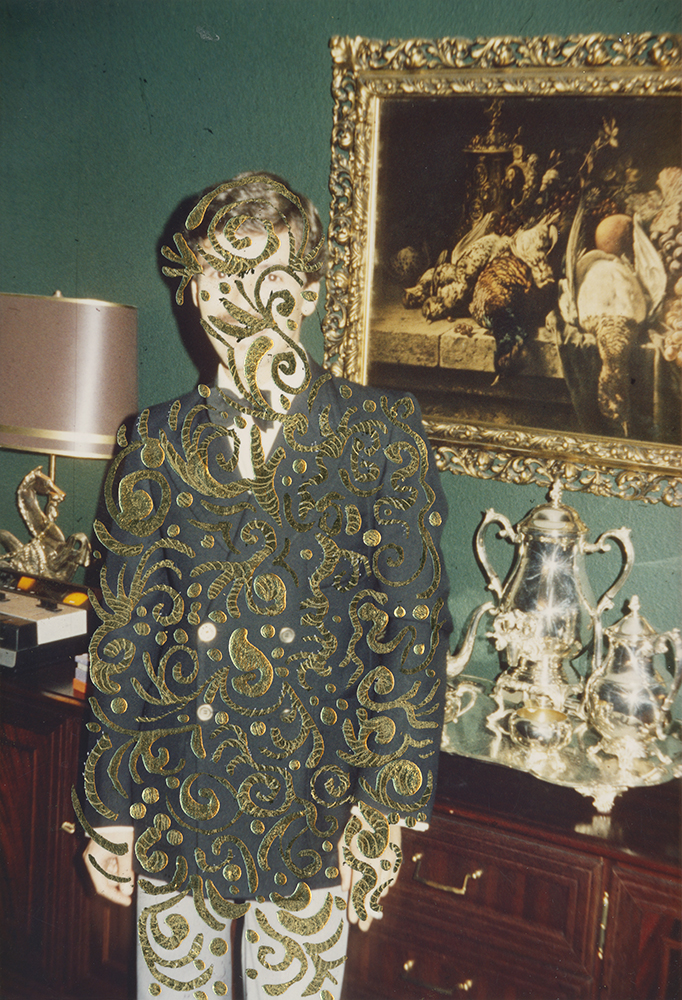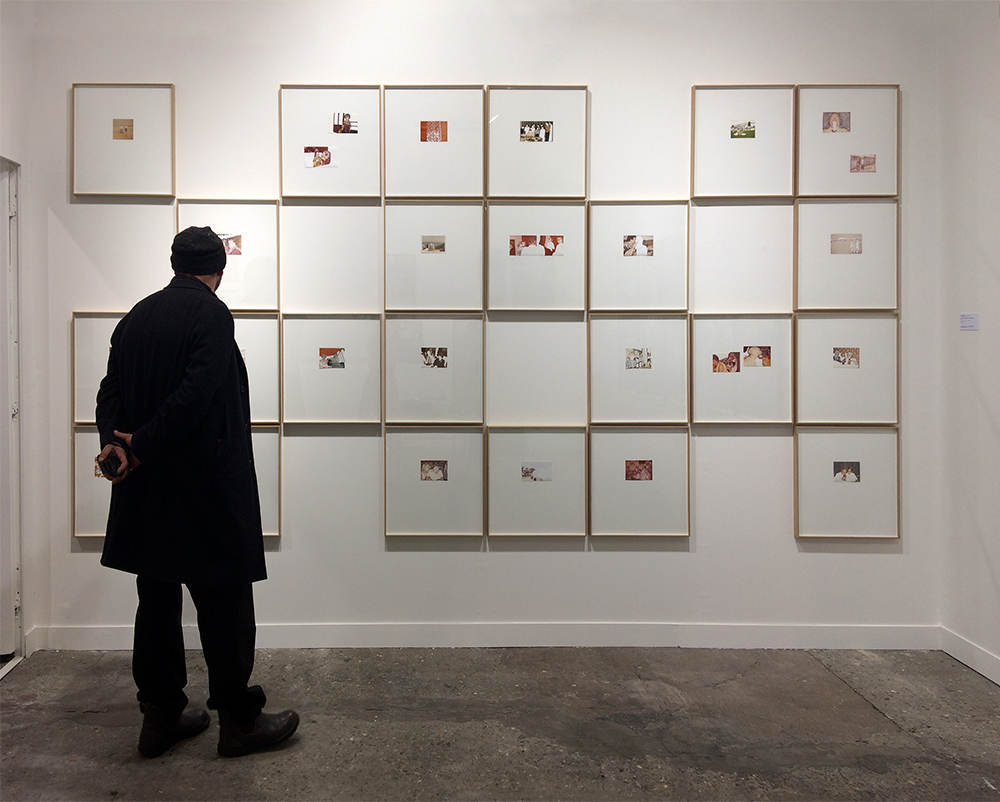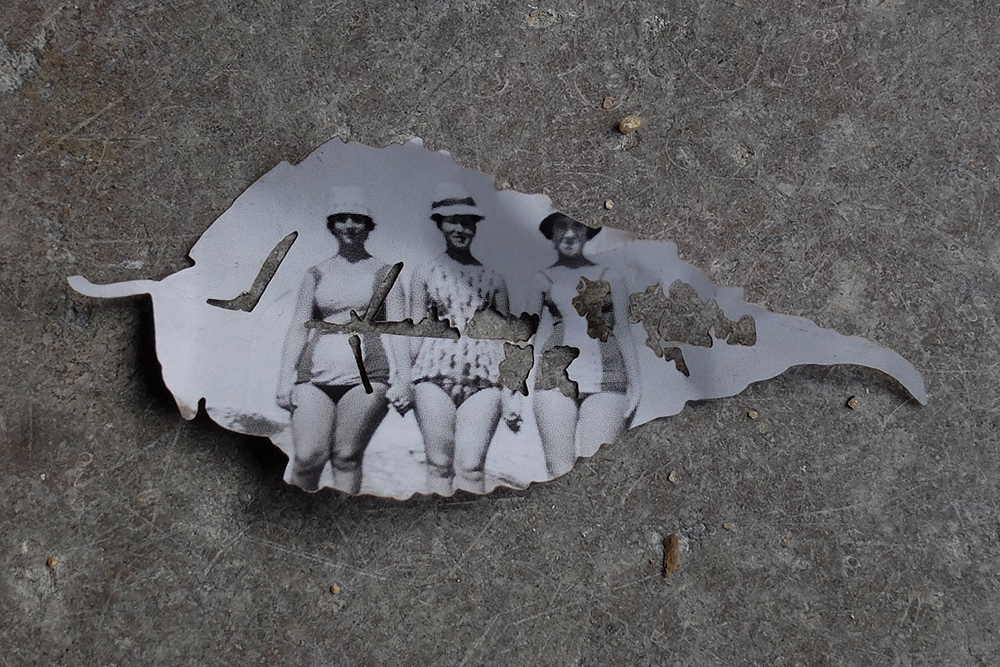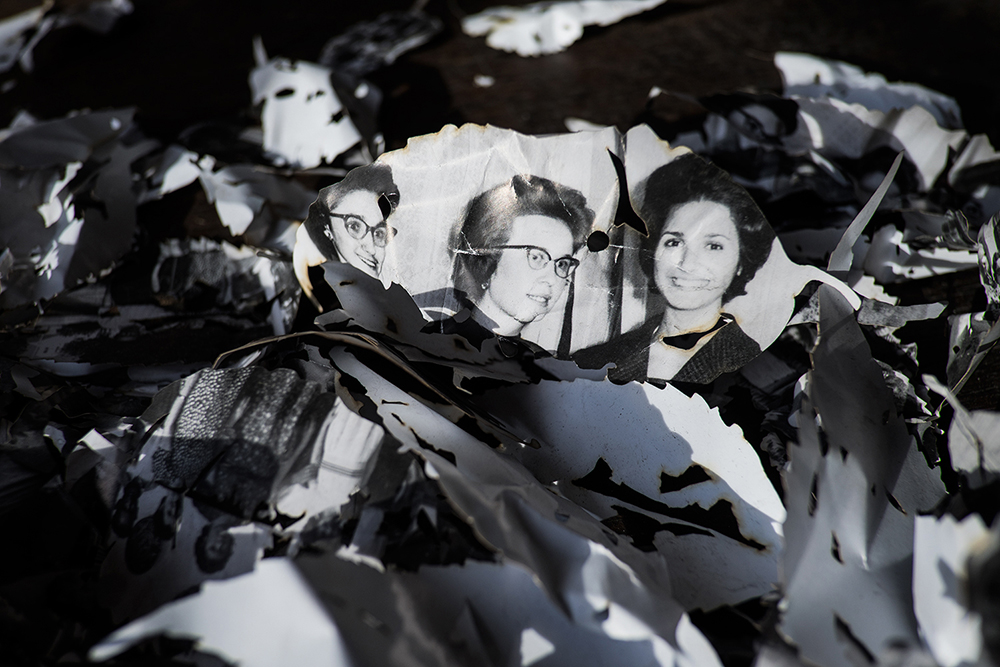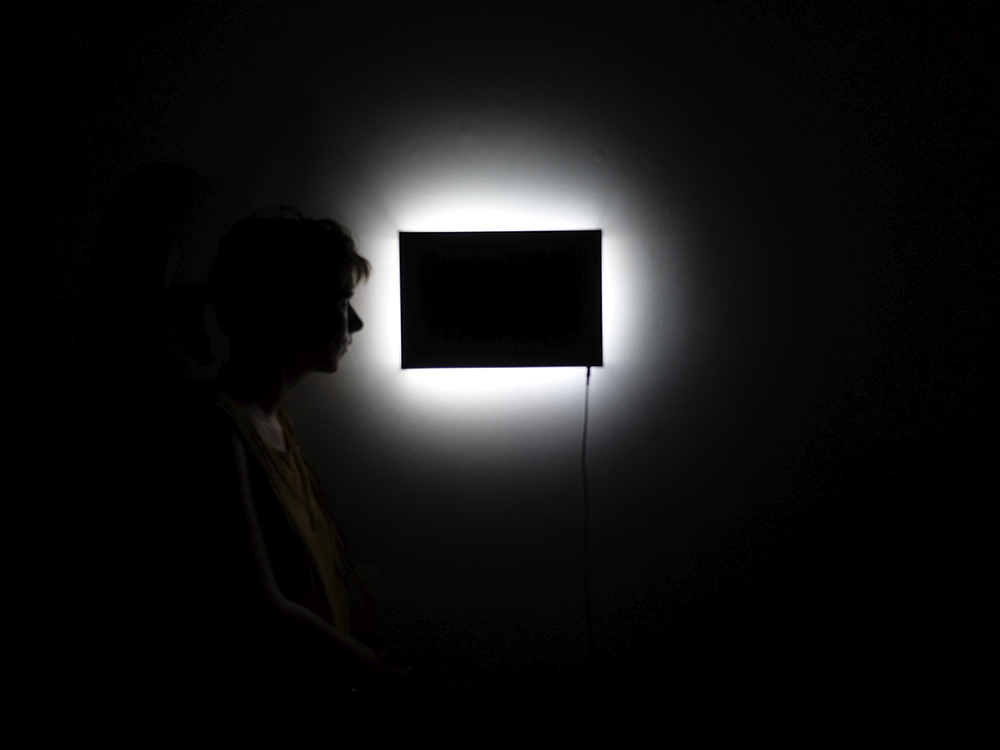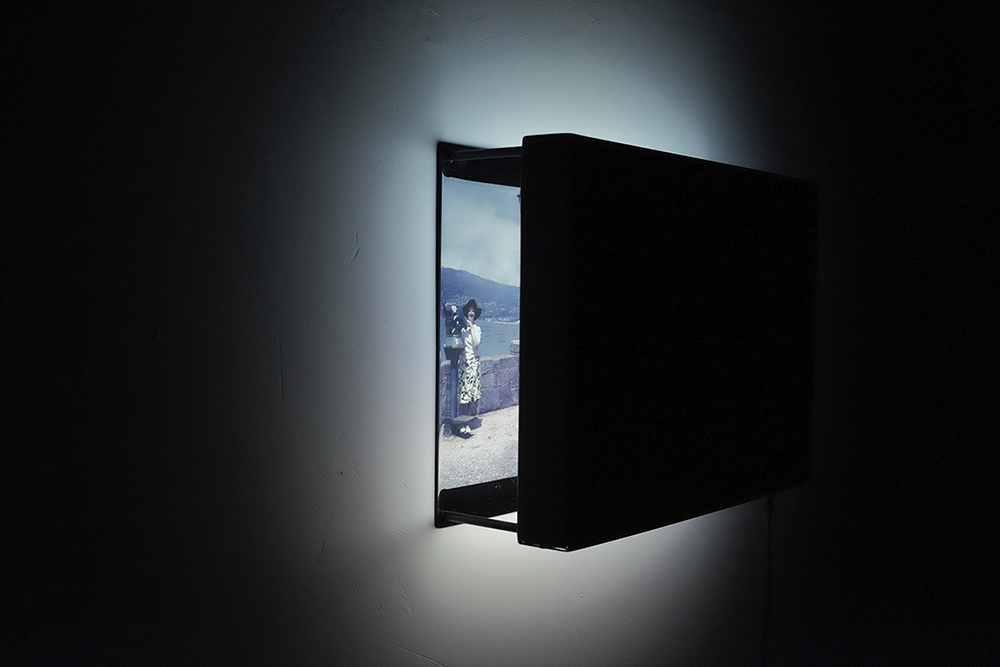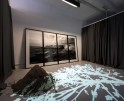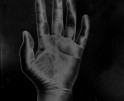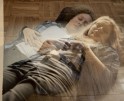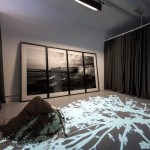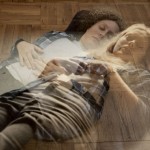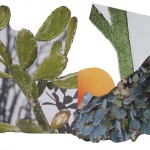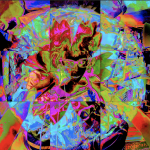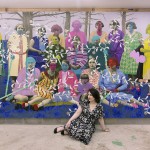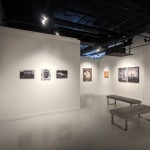PORTUGUESE WEEK: CARLA CABANAS

© Carla Cabanas, “I don’t trust myself when i’m sleeping”, Intervention on color photographs; variable dimensions.
Carlos Barradas: I would like you to introduce yourself and then describe your trajectory, namely what brought you to photography.
Carla Cabanas: I am a visual artist from Lisbon who started by studying painting but has always been interested in photography since the beginning. Not so much in taking photographs, but more in manipulating images and themes. After studying, I continued to use photography in a natural way, it was always present in my projects. Even with using other techniques, such as drawing, installation or others.
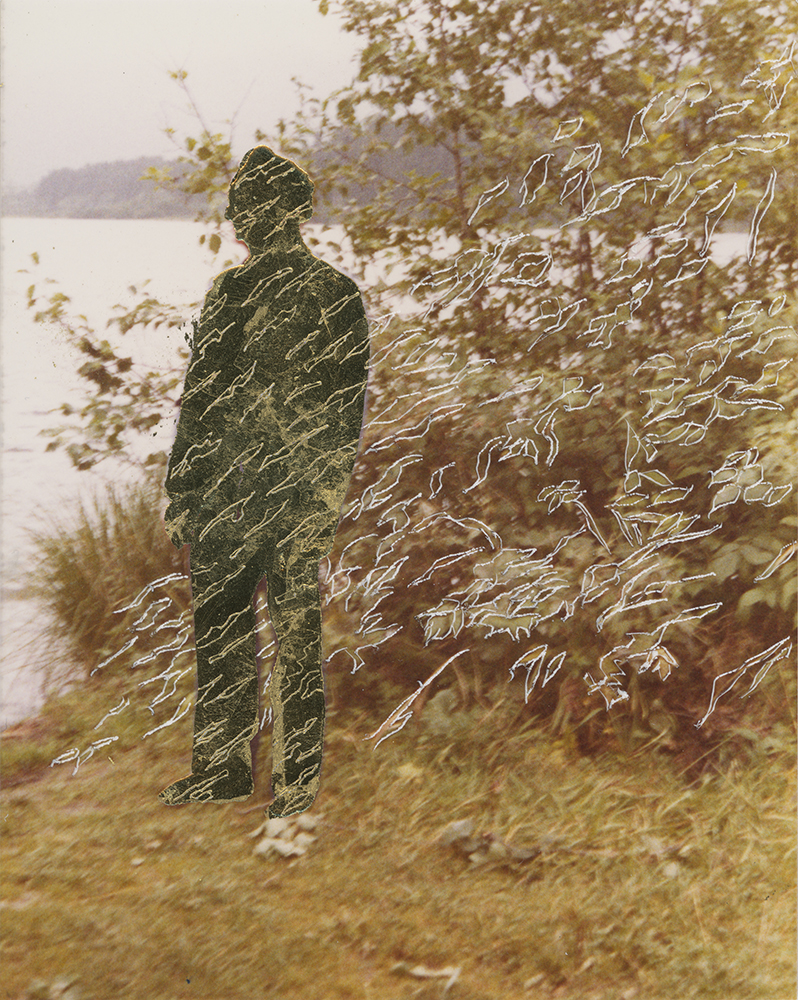
© Carla Cabanas, “I don’t trust myself when i’m sleeping II”, Intervention and gold leaf (22K) on color photographs; variable dimensions.
CB: Where do your projects begin? What are your sources of inspiration?
CC: My projects start with an image or an abstract feeling in my head, which I will then try to understand what it is and where it comes from while I am working.
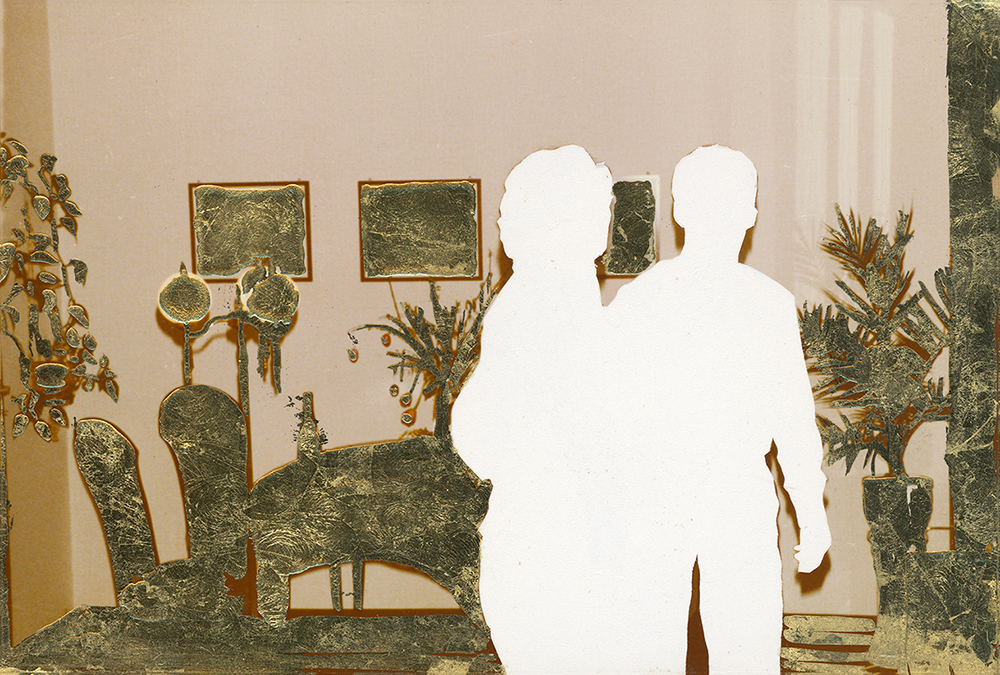
© Carla Cabanas, “I don’t trust myself when i’m sleeping II”, Intervention and gold leaf (22K) on color photographs; variable dimensions.
CB: Sometimes, looking at your work (and this is a question that comes up for the second time this week, even though we are talking about very different styles), I have the feeling that it is something similar to when we remember a past memory , from a situation that happened to us, but that we never relived in the first person. On the contrary, it seems that we are seeing, or remembering, through an external look or perhaps even someone else’s memory, someone who was looking at us the whole time. Are you actively looking for this type of reaction?
CC: I can’t say that I’m actively looking for it, but it’s something present in my work and that I like to feel and make others feel.
CB: In that sense, I go a little further. When I see your work, it seems that sometimes I see my mother, and my father, in some of these situations. Is it possible to say that you are also trying to cause this overlap, or a certain granularity, between personal and collective identities at a given historical moment?
CC: Yes, that is something that interests me. I think we are all connected and even if you have a different story there are common feelings that you can identify with or relate to. And ideally, by creating that emotional connection you can also create a space to ask other questions.
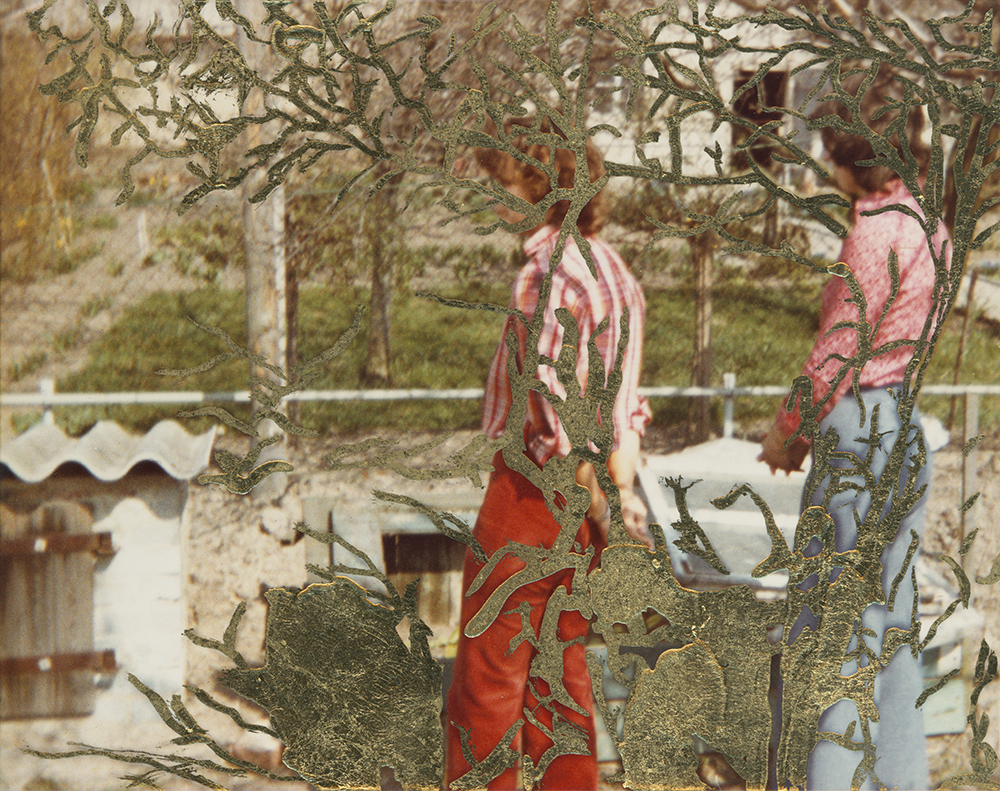
© Carla Cabanas, “I don’t trust myself when i’m sleeping II”, Intervention and gold leaf (22K) on color photographs; variable dimensions.
CB: I imagine that in many of the images you use from your family archive you were not even born? If that is the case, the choice of images is based on what criteria?
CC: Sometimes the images are from a specific archive, other times they are bought at the flea market, it depends on the project. When they are family images, I look for albums and extensive collections of photos from the same family. I like to imagine the family history from their images, to see the children growing up, the adults getting older and try to understand the emotional states from their facial expressions, even knowing that this process is always my projection and interpretation.

© Carla Cabanas, “I don’t trust myself when i’m sleeping”, Intervention on color photographs; variable dimensions.
CB: Metaphors, images that suggest dialogue, more or less pleasant waits. Is it something therapeutic that is also sought after here? Something like making peace with the past through photography? Or just a revisited story?
CC: It’s all of that and a few other things. I am also interested in a reflection about the photographic medium, about our individual and collective memory and history and what remains after we are gone.
CB: Sometimes ironic, sometimes defiant, sometimes contemplative, sometimes acid, sometimes tender. The very characteristics of the interventions (more than the photographs themselves) seem to create powerful emotional and symbolic charges. What are these choices based on?
CC: The choice always depends on the project in question. For example, the series “I don’t trust myself when I’m sleeping” is based on personal stories. But in the Celtis Australis L. series the intervention is based on our collective and interconnected history of life and death.
CB: You treat the absence in different ways and using different techniques. Do they depend on the project? Or the material available?
CC: Yes, it depends on the project, the material available and the way I want to think about the absence at the moment.
CB: In your work, you start from an object that comes from a world that no longer exists and, unlike those who photograph now, you deliberately hide the information that allows us to read people, situations, places. But by removing this information, you give us space to include more. Besides, you can do it calmly and selectively. Do you intend to take us to specific places?
CC: The places always belong to those who see the pieces, that is, when I am doing them, I am thinking of something of mine but when another person sees it, they will make a projection of their own. But above all they are not physical places but emotional ones.
CB: Is there such a thing as “Portuguese photography?”
CC: I think photography is both individual and universal but not specific to countries.
CB: Finally, in what directions will you move in the near future? And how do you see the future panorama of photography in Portugal?
CC: I hope it’s without a mask.
Carla Cabanas (Lisbon, 1979) graduated with a degree in Visual Arts from the School of Arts and Design (Caldas da Rainha) in 2003. In 2004, she completed the Advanced Course at Maumaus – School of Visual Arts (Lisbon). In 2008, she attended the Photography Course of the Gulbenkian Creativity and Artistic Creation Programme. In 2009, she completed a specialisation in Production and Creation in Technological Arts from the Lusófona University of Lisbon. Her work deals with methodologies to expand the defined boundaries of the photographic medium, while simultaneously looking at questions of collective and cultural memory. Carla has presented her work in numerous solo and group exhibitions, including MAAT Museu de Arte, Arquitetura e Tecnologia, Lisbon (2020); Balcony Contemporary Art Gallery, Lisbon (2020); Museu Coleção Berardo, Lisbon (2020); Aa Collections Gallery, Vienna (2019); Sternstudio Gallery, Vienna (2019); Arquipélago – Centro de Artes Contemporâneas, Ribeira Grande, Açores (2019); Biennale de l’Image Tangible, Paris (2018); Grimmmuseum, Berlin (2018); Centre D’art Contemporain, Meymac, France (2018); GlogauAIR, Berlin (2018); Fundação Eugénio de Almeida, Évora (2017); Gallery Carlos Carvalho – Arte Contemporânea, Lisbon (2017); Castello Visconteo Di Legnano, Milan, Italy (2017); Panal 361, Buenos Aires, Argentina (2017); Ox Warehouse, Macau, China (2016); Carpe Diem Arte e Pesquisa, Lisboa (2015); Lisbon Municipal Photographic Archive, Lisbon (2014); City Museum, Lisbon (2014); 7ª Biennial São Tomé e Príncipe (2013); National Museum of Natural History and Science, Lisbon (2012); Círculo de Bellas Artes, Madrid (2012) and CCCB – Centre de Cultura Contemporània de Barcelona (2009). Her work received an Honourable Mention in the Purificacion Garcia Photography Prize in 2012, and third prize in painting in the Ariane de Rothschild competition in 2005. In 2010/2011, Carla received a sto carry out a placement in Antwerp under the Inov-Art programme, awarded by the Portuguese Ministry of Culture. Carla has also undertaken numerous artistic residencies, namely in Vienna, Berlin and São Tomé and Principe (internationally); and Alvito; São Miguel, Azores and Lisbon (nationally). Carla Cabanas’s work is represented in several collections, including: National Gallery of Art (Washington DC); Fundação Luso-Americana (Lisbon); LPS Collection (of Stanislas and Leticia Poniatowski); Colección Kells (Santander); Fundação PLMJ Collection; Novo Banco Art Collection; Banque Privée Edmond de Rothschild (Europe) and Câmara Municipal de Lisboa; among others. She is represented by Carlos Carvalho – Arte Contemporânea Gallery in Lisbon.
Follow her on Instagram: @carlacabanas
Posts on Lenscratch may not be reproduced without the permission of the Lenscratch staff and the photographer.
Recommended
-
Earth Week: Casey Lance Brown: KudzillaApril 25th, 2024
-
Artists of Türkiye: Larissa ArazMarch 28th, 2024
-
Rebecca Sexton Larson: The Reluctant CaregiverFebruary 26th, 2024
-
Mexican Week: Cannon BernáldezFebruary 6th, 2024
-
Erika Kapin: Mom and MeJanuary 19th, 2024

